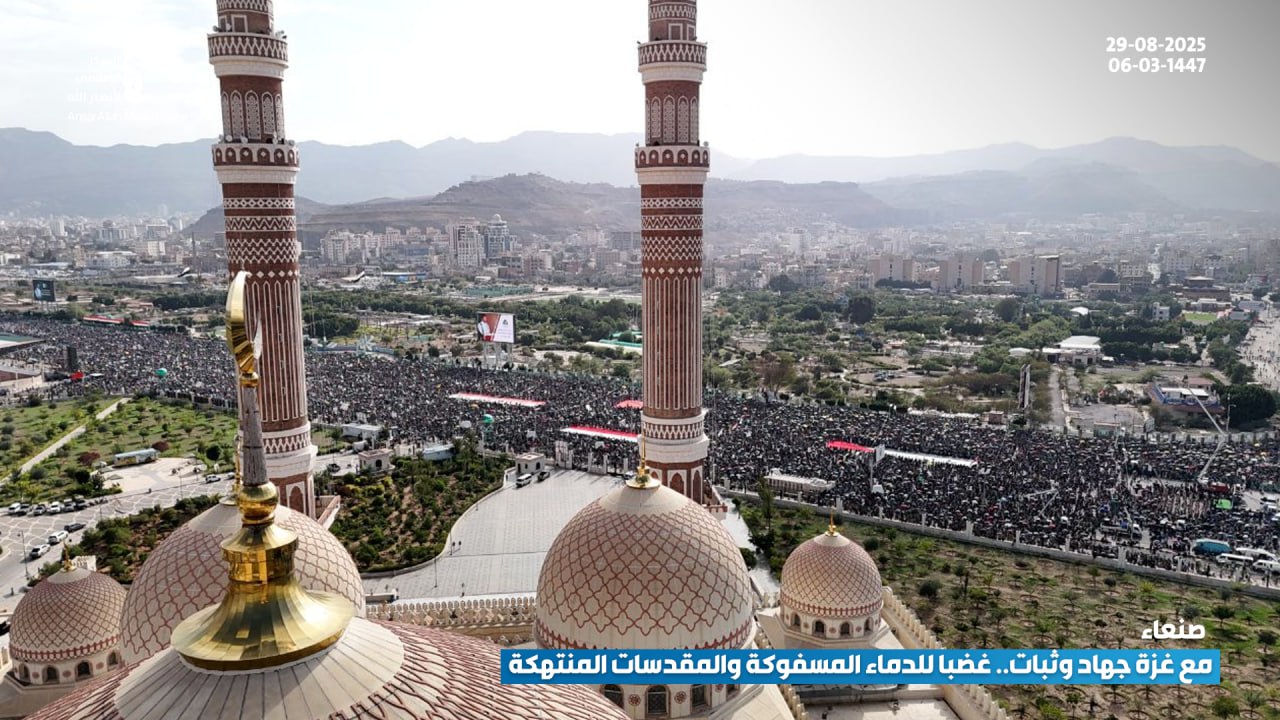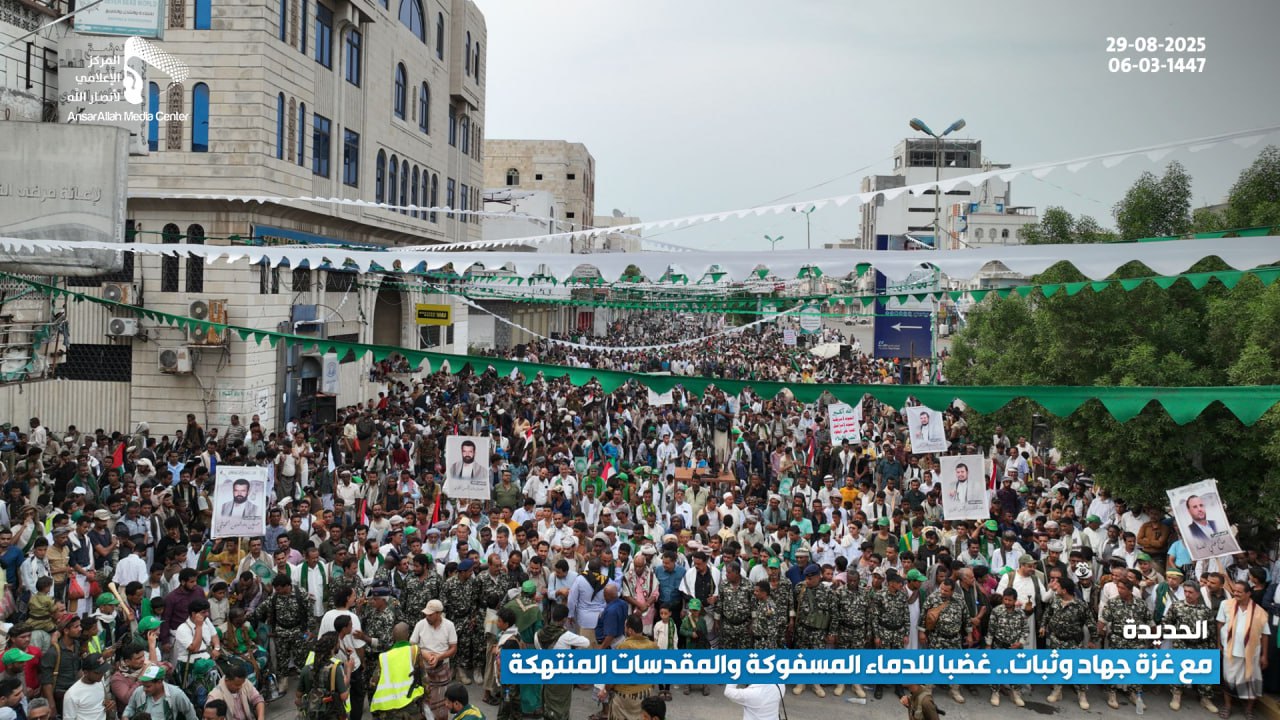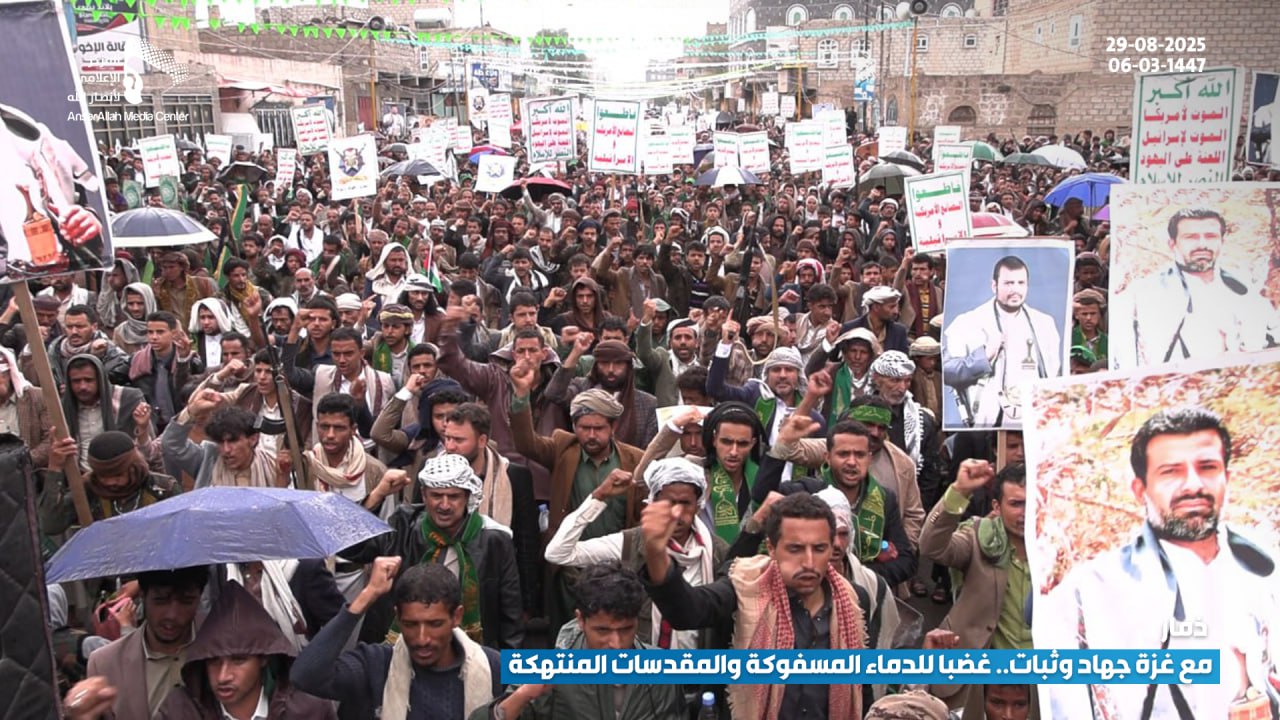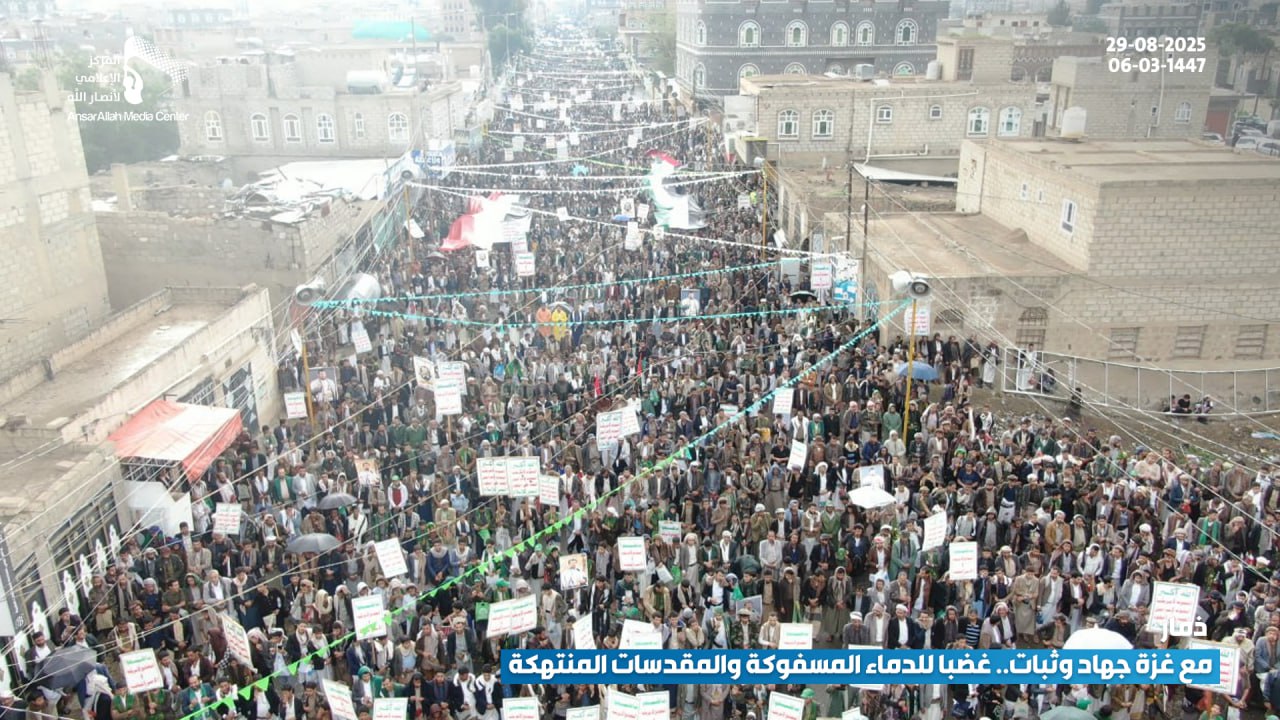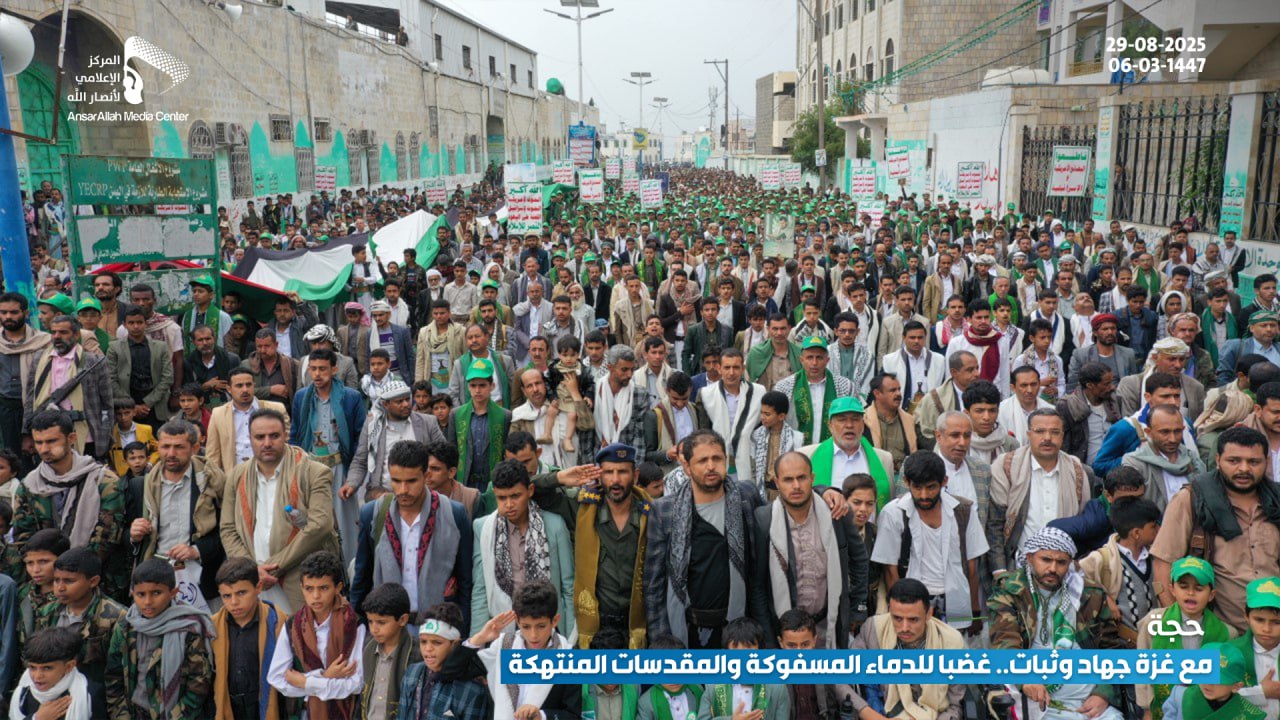In a day written with fire and gunpowder, with rockets and aircraft, Yemeni crowds took to the streets on Friday in more than 1,431 squares and arenas, turning the land into seas of people and transforming chants into flames lighting the darkness of betrayal and abandonment. Yemenis raised their flags high—the Yemeni and Palestinian banners—drenching the squares in the colors of dignity and pride, proclaiming with one voice from Sanaa, Taiz, Saada, Hodeidah, and across the provinces: “Gaza is our cause, Palestine is our destination, al-Quds is our sanctuary. We will not compromise, and we are ready for escalation.”
The mass gatherings spanned: Sanaa’s Al-Sabeen Square; Hajjah with 308 squares; Ibb with 290; Hodeidah with 268; Amran with 116 marches; Al-Mahwit with 92; Taiz with 87; Raymah with 82; Dhamar with 52; Al-Jawf with 47; Saada with 41; Al-Bayda with 23; Marib with 16; Al-Dhale with five squares; and Lahj with three squares.
The marches embodied a unique union between the spiritual joy of celebrating the birth of the Prophet of Mercy and the furious grief over Palestinian bloodshed and the desecration of al-Quds. Banners rose high with verses of loyalty to the Messenger of Allah and messages of commitment to his path of resistance against oppressors, affirming that the descendants of the Ansar remain true to their first covenant: supporting faith and defending the oppressed.
The chants were not mere words, but a clear declaration that Yemen, as it prepares to celebrate the Prophet’s birthday, intertwines the sacredness of the occasion with the greatness of the battle. Slogans reverberated beyond Yemeni squares, calling upon every Arab and Islamic capital for an awakening and an urgent alignment that admits no delay.
On this Friday, Yemen appeared as one square, one voice, and one heartbeat. The sight was extraordinary: Yemeni and Palestinian flags rising together as if one banner, surrounded by slogans of jihad and steadfastness, with clenched fists lifted like triggers ready to fire.
The demonstration carried dual meaning: joy for the approaching birth anniversary of Prophet Muhammad, who united the Ummah on dignity and jihad; and overwhelming anger at the daily massacres faced by the people of Gaza and the plots against Islamic sanctities, especially al-Aqsa Mosque.
.jpg)
From the heart of the squares, chants erupted: “The nation’s affairs will not be set right if it does not rise in anger for the Qur’an,” “Gaza, heroes of our time, we are with you until victory,” and “By Allah and He is the best guardian, we will continue to strike Israel.”
These were not ordinary slogans, but renewed pledges of allegiance, tying the crowds to their history as descendants of the Ansar, who first supported the Prophet, and who now continue to uphold his message against Zionist and American tyranny.
The demonstrators declared full readiness to confront the Zionist enemy, to continue supporting Gaza and the Palestinian resistance with unwavering determination, and to fight in the Promised Victory and Sacred Jihad Battle until victory is achieved.
The masses blessed the qualitative operations carried out by the Yemeni Armed Forces deep inside the occupying entity, praising the advancement of missile capabilities that have spread fear among the Zionists. They also renewed the call for Arab and Islamic nations to boycott American and Zionist goods, considering it the least duty toward the people of Gaza facing genocide and starvation, and demanded strong positions against repeated violations of Islamic sanctities.
Yemen’s turnout, despite enduring years of war and economic blockade, carried a double message: that true belief in a cause is not measured by political luxury or economic comfort, but by conviction and certainty. The mobilization confirmed Yemen is no longer a silent part of the Arab map but is now at the core of the struggle—sending rockets deep into the occupation’s territory while aligning word with deed.
Crowds unanimously blessed the Yemeni Armed Forces’ special operations against Israel, stressing that these military strikes reflect not only battlefield strategy but also the unified spirit of the Yemeni people. Resistance, they declared, is not the choice of a faction, but the creed of an entire nation.
Renewing their loyalty to the Prophet on the occasion of his birth, Yemenis linked that loyalty directly to the ongoing battle, emphasizing that walking in the Prophet’s path means confronting oppressors in every age, supporting the oppressed everywhere, and proving that jihad today is the clearest test of true belonging to Prophet Muhammad's message.
The statement issued by the marches affirmed Yemen’s steadfastness—unshaken by circumstances or challenges—in its principled stance with Gaza, pledging continued support, escalation, and development of resistance until Allah grants victory, relief, and liberation for Gaza, Palestine, and holy Al-Aqsa Mosque.
The statement added: “Any aggression or escalation—whether Zionist, American, or otherwise—will never drive us to abandon our religion, identity, principles, and values, which we have embodied in practice through our position with Gaza.”
The protestors emphasized thanking Allah for enabling them to produce cluster warheads that have unsettled Zionists since their first strike, praying for greater capabilities and more decisive blows in the future.
Concluding, the statement called upon all Muslims—and the free people of the world—to return to the Holy Qur’an, to its guidance, which can rescue humanity from the darkness of tyranny represented by Zionism and its allies today, and to rediscover the personality of Prophet Muhammad (peace be upon him and his family).


